Abstract
1. Leaves of a number of species were hydrolysed with aqueous sulphuric acid and the resulting mixtures of sugars were fractionated by chromatography on activated charcoal. Paper chromatography of the fractions showed the presence in all the hydrolysates of minor constituents with RF values similar to or greater than those of the common hexoses and pentoses. 2. Two of these were identified as 2-O-methylxylose and 2-O-methylfucose. Estimates of the amounts present in whole leaves, and in fractions prepared from them, showed that they were associated with the hemicelluloses. 3. A third constituent was identified, by the formation of its di-isopropylidene derivative, as apiose. It also was associated chiefly with the hemicellulose fraction; none could be found in aqueous extracts from leaves of Tilia vulgaris, nor in aqueous extracts of Zostera marina, in which apiose is a major constituent of the water-insoluble polysaccharide. 4. A further constituent, after further purification by preparative paper chromatography, was tentatively identified, by gas–liquid chromatography of derivatives, as 3-O-methylgalactose, and was probably accompanied by small amounts of 4-O-methylgalactose. 5. These observations confirm the widespread occurrence of 2-O-methylxylose, 2-O-methylfucose and apiose, but 3-O-methylgalactose was hitherto known only in slippery-elm mucilage, and 4-O-methylgalactose in soil polysaccharides. Some experiments on the digestion of leaf hemicellulose fractions by snail crop-juice suggested that the mono-O-methyl sugars might confer resistance to enzymic degradation.
Full text
PDF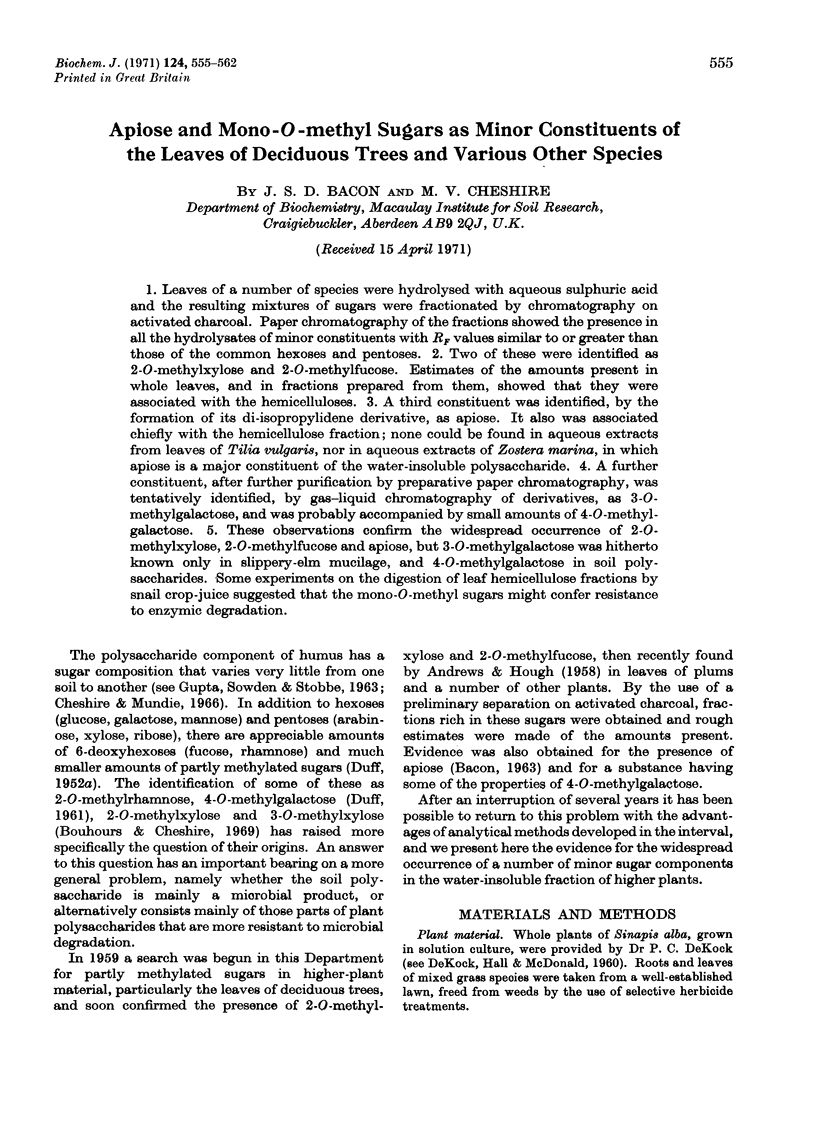
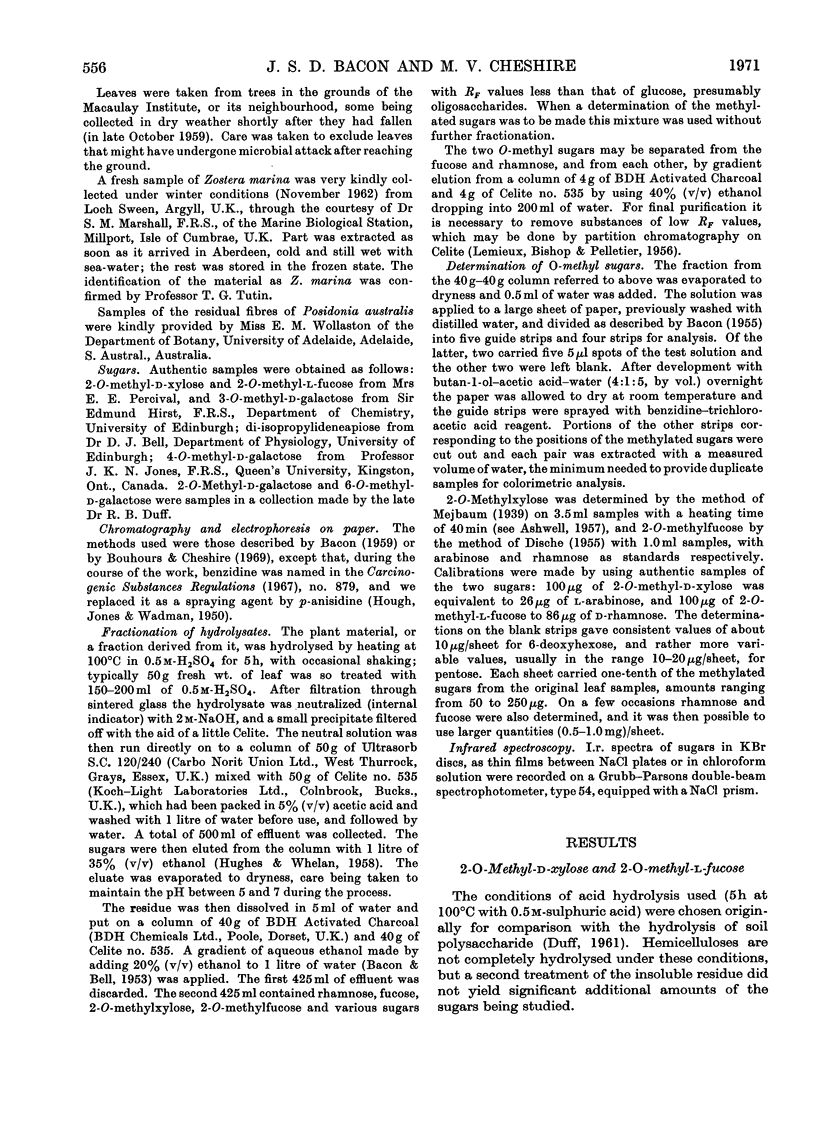
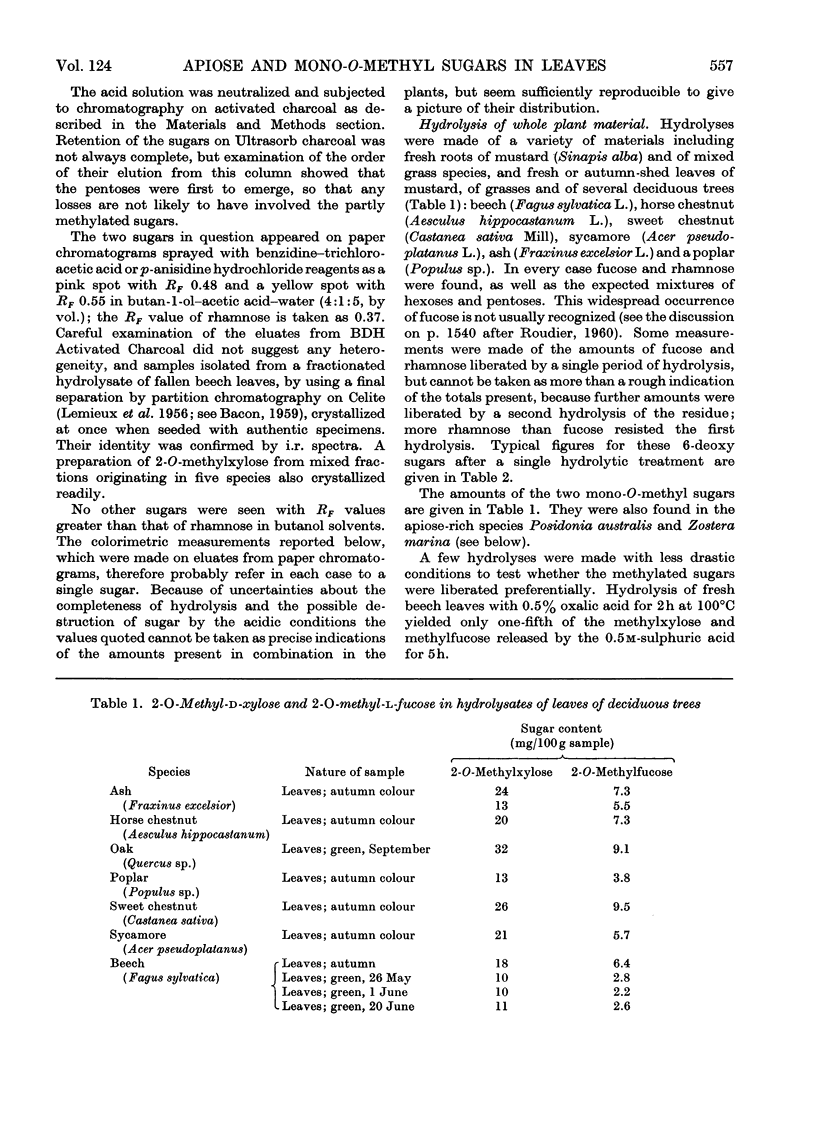
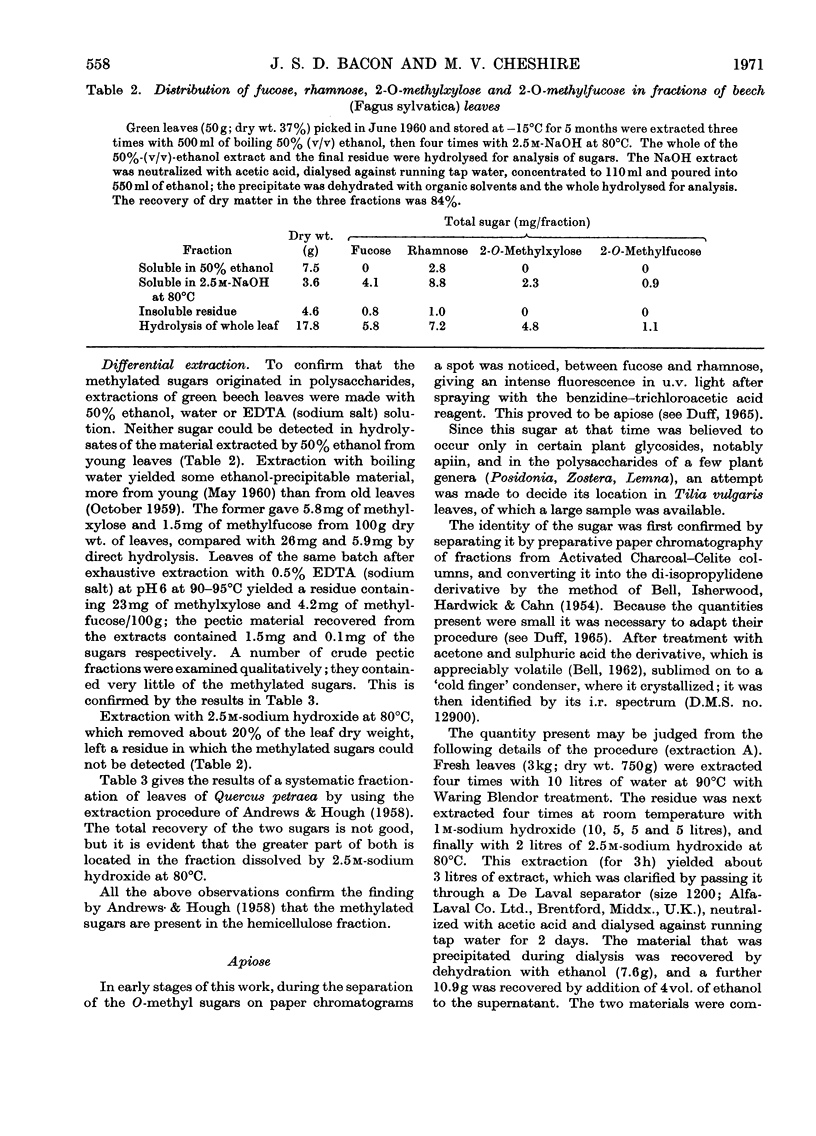
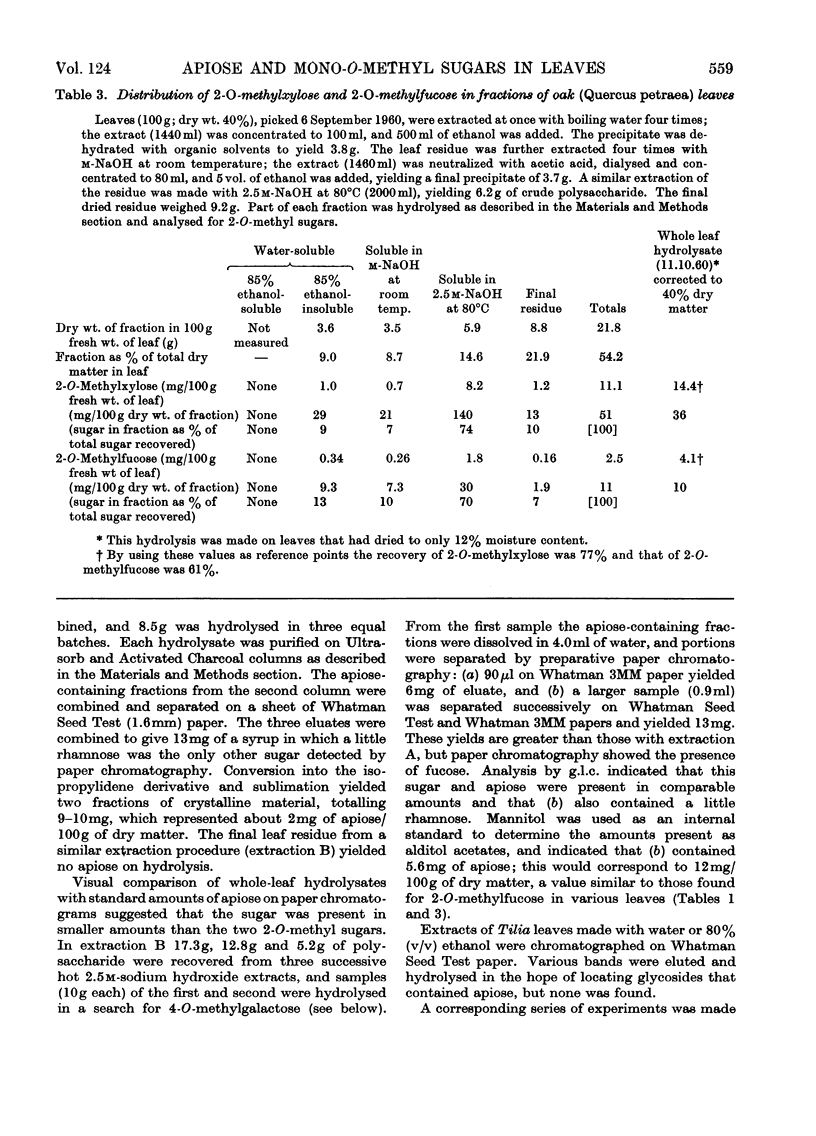
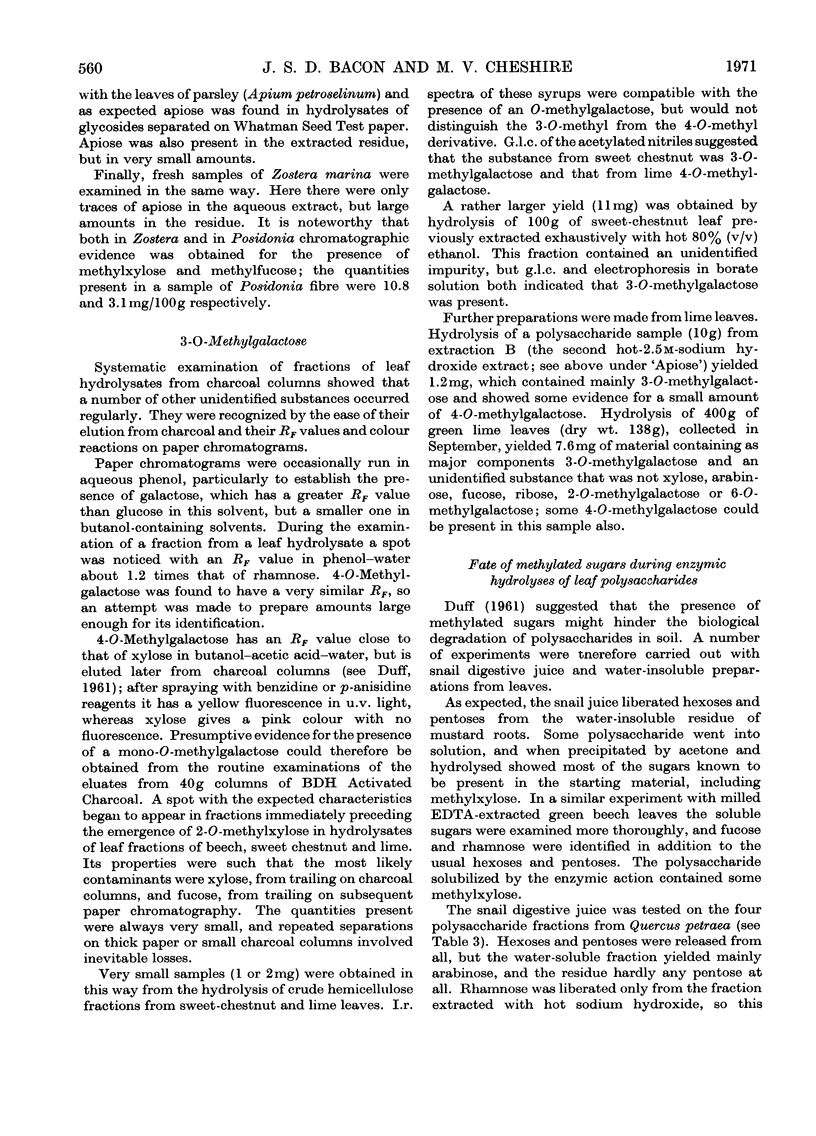
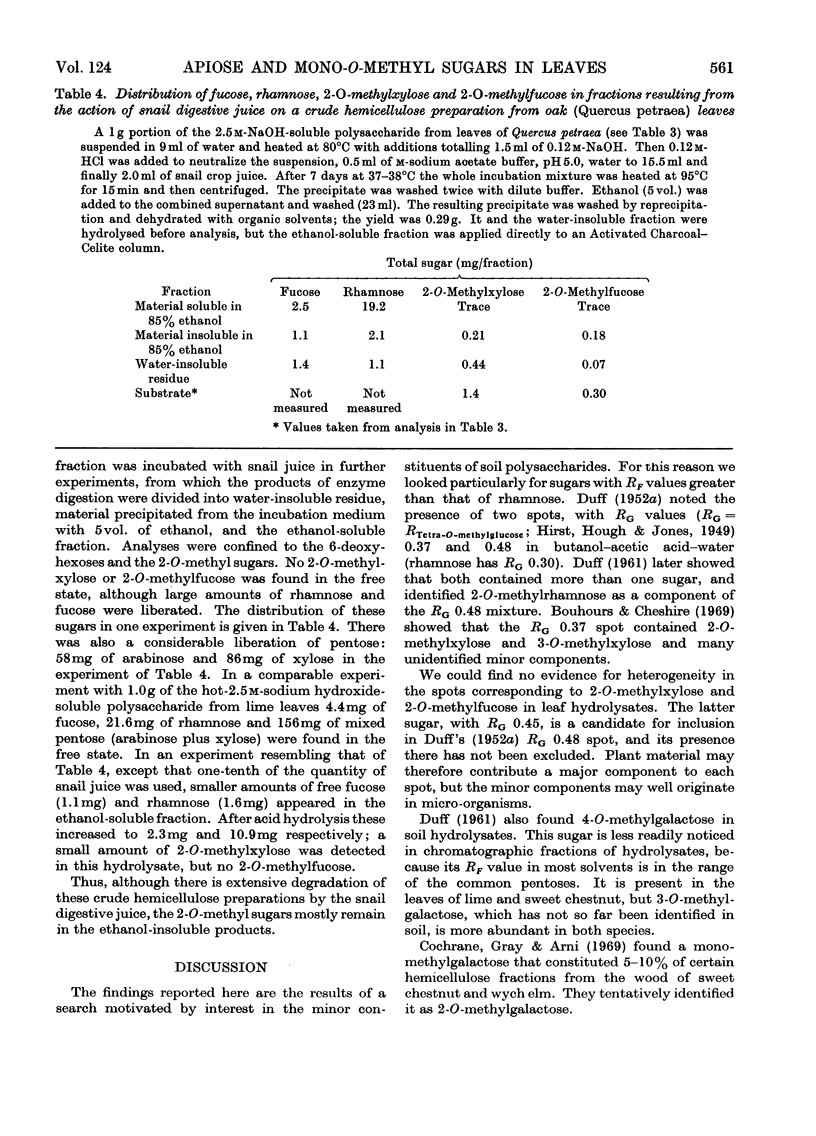
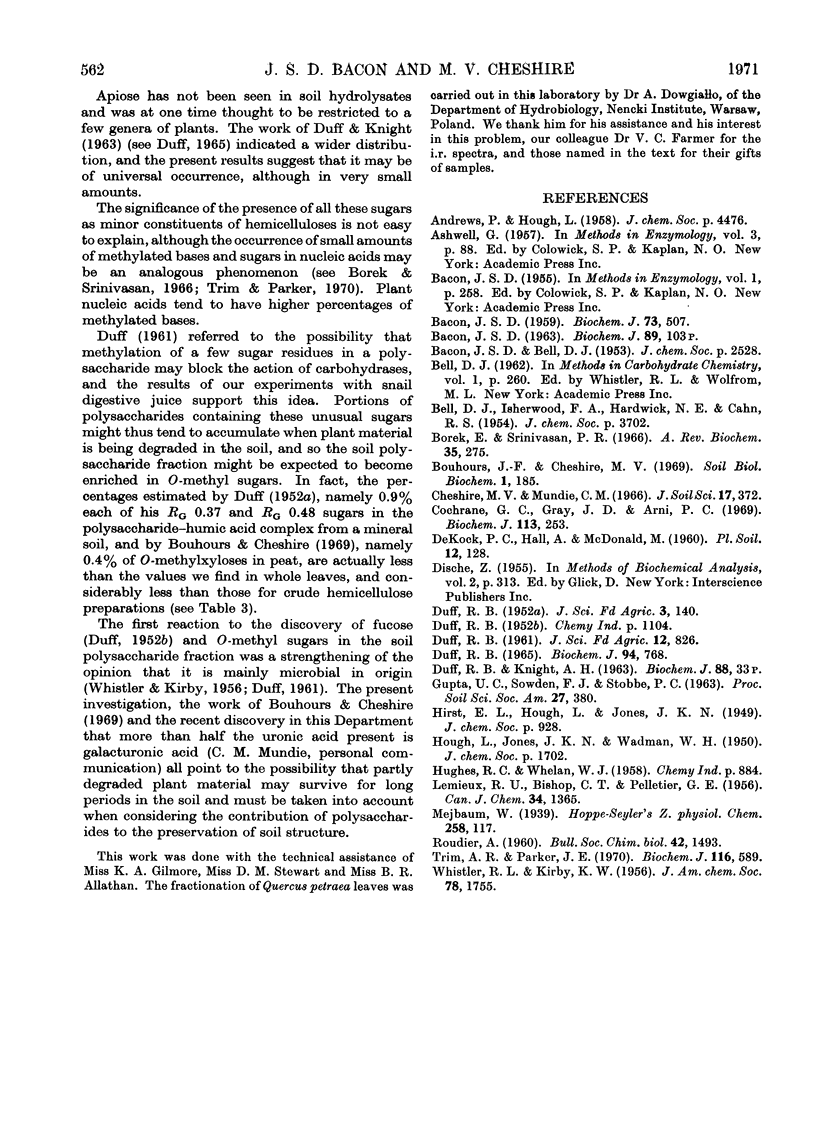
Selected References
These references are in PubMed. This may not be the complete list of references from this article.
- BACON J. S. The trisaccharide fraction of some monocotyledons. Biochem J. 1959 Nov;73:507–514. doi: 10.1042/bj0730507. [DOI] [PMC free article] [PubMed] [Google Scholar]
- Cochrane G. C., Gray J. D., Arni P. C. The emision of corrosive vapours by wood. Hot-water-extracted O-acetylated hemicelluloses from sweet chestnut (Castnaea sativa) and wych elm (Ulmus glabrau) and a discussion of O-acetyl-group changes occurring in these woods during incubation at 48 degrees and 100 per cent relative humidity. Biochem J. 1969 Jun;113(2):253–257. doi: 10.1042/bj1130253. [DOI] [PMC free article] [PubMed] [Google Scholar]
- DISCHE Z. New color reactions for determination of sugars in polysaccharides. Methods Biochem Anal. 1955;2:313–358. doi: 10.1002/9780470110188.ch11. [DOI] [PubMed] [Google Scholar]
- DUFF R. B. THE OCCURRENCE OF APIOSE IN LEMNA (DUCKWEED) AND OTHER ANGIOSPERMS. Biochem J. 1965 Mar;94:768–772. doi: 10.1042/bj0940768. [DOI] [PMC free article] [PubMed] [Google Scholar]
- ROUDIER A. [The hemicelluloses and the oligosides resulting from their hydrolysis]. Bull Soc Chim Biol (Paris) 1960;42:1493–1517. [PubMed] [Google Scholar]
- Trim A. R., Parker J. E. Preparation, purification and analyses of thirteen alkali-stable dinucleotides from yeast ribonucleic acid. Biochem J. 1970 Feb;116(4):589–598. doi: 10.1042/bj1160589. [DOI] [PMC free article] [PubMed] [Google Scholar]


